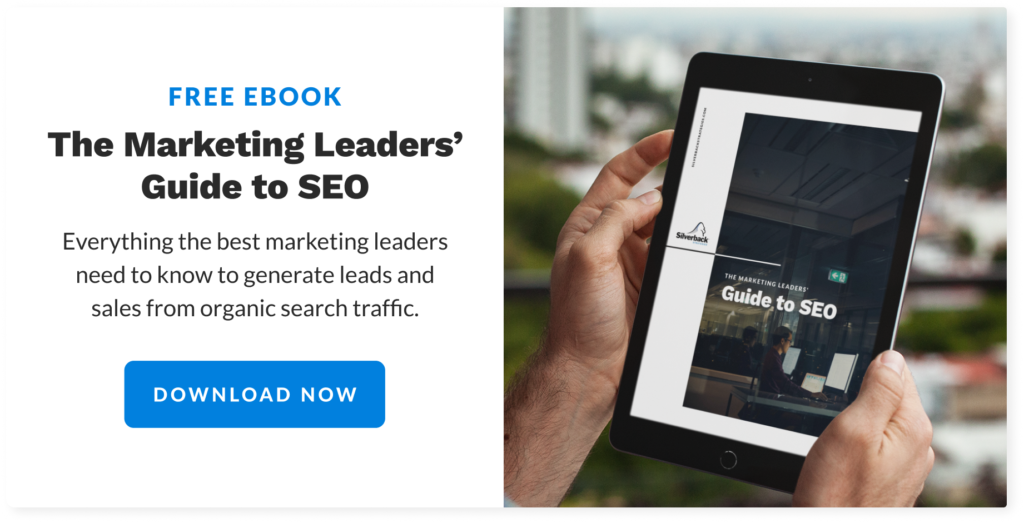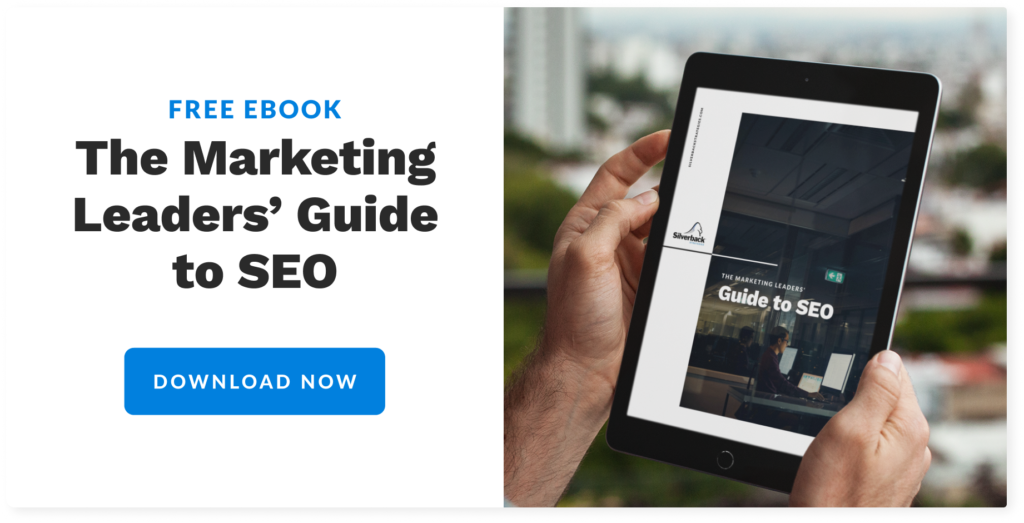
We work in an organic search environment that has evolved dramatically in the last few years. We are told keywords don’t matter anymore and context is king. No-click search is slowly taking over search engine results pages and we must plan for “On-SERP SEO”. We are told to optimize for voice search as user behavior changes.
As an agency built on the best practices of search marketing, how do we keep up? How do we address the changing nature of search without sacrificing efficiency?
And — since the clock is always ticking when you’re a performance agency — how do we help our clients? They need to build and scale their own SEO programs with the speed and effectiveness they need in order to see real business results?
Our answer to these questions is a program we call Editorial SEO.
The Principles of Editorial SEO

Editorial SEO combines the tenets of technical SEO, on-page SEO and content marketing. It targets search queries that happen upstream in the customer journey, giving you a head start on leads and sales. Editorial SEO helps you execute faster, more effective SEO and content strategies that result in intense organic search growth.
By definition, the program creates greater alignment between organic search and content goals. It streamlines production and addresses specific problem areas using a more agile approach.
Google’s algorithm has evolved to a point where high-quality content is needed to achieve long-term organic success. Just having your SEO team add keywords into existing content isn’t going to be enough in today’s SERP landscape. Neither is having your content team write blogs for the sake of keeping it updated.
SEO and content teams must work hand-in-hand to come up with an editorial strategy that serves multiple purposes. It targets keyword for buying intent up and down the funnel, and also drives on-page engagement.
Editorial SEO technical and on-page tactics
Technical SEO
We could write great content for our clients all day long (in fact, that’s how our Content Team spends most of its days). That, however, means nothing if the underlying technical foundation of the website is not optimized for organic search.
Technical SEO is making sure that a website is as friendly to search engines and users as possible. You could have superior content across your site but a technical issue may render your content invisible to search engines. If this is the case, users may never find your content.
Technical SEO requires an expert’s eye. It includes deep dives into meta content, site architecture, page speed, mobile usability and several other potential problem areas. Clients, content marketers and web developers may have some insight into potential issues, but a specialist can address all concerns.
Writing the right content for the right users starts with an open line of communication between SEO, content, and strategy. SEO experts weigh in on which type of content performs well in SERPs for given keywords. They can help guide the strategy about how that performance can be replicated.
Content experts identify which type of content audiences like to consume, based on their research. The strategy representative can provide input on what would be best from a lead-driving perspective.

On-Page SEO
Sometimes, on-page SEO is mistaken as simply “best practices” for content creation.
It’s a bit more than that.
The team at Moz.com define on-page SEO as “…the practice of optimizing individual web pages in order to rank higher and earn more relevant traffic in search engines (and) refers to both the content and HTML source code of a page that can be optimized.”
So, yes, part of this ties into the specifics of content production. It also requires a trained SEO specialist that helps the right audience see your content.

The Curious Case of the Invisible Content
In 2017, 43 percent of marketers told BrightEdge that 75 percent of their content is not consumed. This raises an interesting question — what’s the point of doing the work if no one’s going to use it?
Users more easily find content on search when creators work with SEO specialists. Content online is not Field of Dreams. Just because you built it doesn’t mean people will flock to it. When you invest in Editorial SEO, you give content a fighting chance.
“But even earlier in the process, an SEO resource also helps the content team to determine what people are actually searching for around our client’s business or industry.”
Content marketing. The textbook definition of content marketing from the venerable Content Marketing Institute is “…a marketing technique of creating and distributing valuable, relevant and consistent content to attract and acquire a clearly defined audience — with the objective of driving profitable customer action.”
This matches the philosophy we espouse at Silverback.
Silverback’s flavor of content marketing also includes elements of social media, creative design and off-page SEO. Our friends at Moz explain this as “…actions taken outside of your own website to impact your rankings (like) improving search engine and user perception of a site’s popularity, relevance, trustworthiness, and authority (by) other reputable places on the Internet (pages, sites, people, etc.) linking to or promoting your website, and effectively vouching for the quality of your content.”
SEO Never Dies, It Multiplies
A few years ago, there was speculation that content marketing would replace SEO up to that point. High-quality, authoritative content would be the coin of the land and all this scraping and scuttling for keywords would disappear.
That didn’t happen, of course. As the very nature of search changed, Editorial SEO became the most logical answer to a high-performance SEO program.
The Power of Editorial SEO

The new face of the SERP — loaded with ads, questions and answers, maps, social media, reviews, shopping, scores, news, videos, etc. — complicates search marketing.
Ranking first in organic search results means a lot less today. First, users have to scroll through a veritable carnival of Featured Snippets just to find that result. Secondly, you actually need to rank higher than first in order to be invited to the party.
And how do you get invited to that party?
Great content answers real questions. It combines the technical schema and site-crawling functionality that allows search engines to pick your result from the millions of possibilities.
The process starts with each party bringing their priorities to the table. The strategy representative brings business priorities — new product launches, seasonal priorities, etc. Content experts brings priorities from an editorial perspectives — blog, PDF downloads, infographics, and so on. Then, SEO experts bring priorities and insights, like search volume or SERP feature opportunities.
When we work with clients, our search and content experts game plan several steps for the coming months.
All priorities are fleshed out in a quarterly plan. We work toward opportunities that have the most impact. This could be SEO value, content that supports a business need, or updates to existing content that could perform better. This collaboration brings needs and ideas to the table, then establishes a vision for the quarter.
Starting an Editorial SEO Program

When we audit a client’s search presence, we often find immediate areas of opportunity for new or refreshed content. As the engagement deepens, these opportunities become more and more prevalent.
In some cases, our SEO teams work with content creators on the client-side. This is fine, but hinges on the in-house content team to take on new work and turn it around quickly. Otherwise, this team structure can lead to overtasked writers and slower, tangled chains of communication. Ultimately, the search program could become hamstrung and negatively impact performance.
The relationship between content marketing and SEO is a mutually beneficial one. When clients embrace an Editorial SEO strategy, it produces search-friendly content at an exponential rate.
Once the SEO Ball Starts Rolling, It Doesn’t Stop
Quite possibly the largest benefit of Editorial SEO is the long-term value it can drive. A solid technical foundation and frequently updated content will prompt Google to crawl your site more frequently. This can grow your domain authority over time. We’ve seen this lead to enormous organic growth for a variety of clients. The longer your buyers consider a purchase, the more you could benefit from an Editorial SEO strategy.
We’ve Done This Before: An Editorial SEO Case Study
Long Roofing is one of Silverback’s closest client partners. This industry-leading home improvement business has built a national presence thanks to its quality, integrity and craftsmanship. A few years ago, Long Roofing wanted to expand from the Mid-Atlantic market into New England.
Long Roofing quickly build a presence in New England with a blog and editorial strategy optimized for search. Targeted, visually appealing social advertisements on Facebook, Instagram, and Pinterest also promoted the content. Ads targeted prospects with the highest chance of turning into a sale. This was all made possible by modeling target audiences from rich first-party data.
The results?
- 242 percent increase in overall revenue
- 667 percent increase in web traffic
- 429 percent uptick in online leads.
Editorial SEO: The Best of All Worlds
SEO engagements are futile if you can’t prove growth.
Content is devalued when there is an assumption that all its metrics are soft, never pointing towards measurable performance. Silverback’s Editorial SEO program combines the best aspects of search and content to create uniquely powerful results.
Content has to be produced or updated to capitalize on search opportunities. Likewise, content is more likely to rank when there is an eye focused on the search landscape. Distribution is a huge part of a content marketing strategy, and it can happen naturally with Editorial SEO.

Work with a new kind of agency
Content marketing and SEO were always meant to drive revenue. But how it drives revenue has changed. An SEO management agency like Silverback helps marketing leaders hit revenue goals so they can grow their business, their budgets, and their team.
Recognized by Ad Age, Inc Magazine and the Washington Post as a best place to work, Silverback is a destination for top marketing talent. Better talent means better performance for clients.
Our secret is simple. Healthy teams lead to happy employees and happy clients. Our focus on team health leads to open, honest and direct communication between clients and agency reps. Issues are solved faster, expectations are clear, and the results are impressive. Contact us to learn more today.
Recent Posts
The Evolution of SEO Content: Building Sustainable Strategies with AI
Read the ArticleThe Ongoing SEO Process: Tips + Best Practices
Read the ArticleWhy You Need Audience Research in SEO
Read the Article
Unlock Your Growth Potential
Silverback helps businesses catapult web traffic, leads, and sales. We combine analytical and creative expertise to drive inbound marketing campaigns and track it all to find insights on what worked, what didn’t, and what we should try out next.
Contact Us